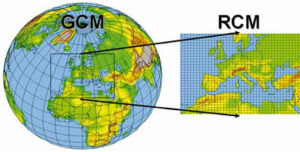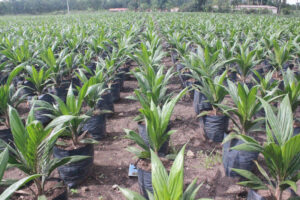Under the Sea
With three quarters of the total waters of the ocean on Earth, the depth still keeps many unanswered questions. Hard to access for observation and too long relegated to the background, the physical mechanisms of the deep ocean now pike scientist’s interest. Casimir de Lavergne, oceanographer at LOCEAN-IPSL, studies movements and interactions of the deep ocean and discusses the progress to be made to gain further insight.
Before understanding possible disruptions caused by climate change, scientists need to understand with a good precision the natural mechanisms of climatic systems. Some remain little known, such as those regulating the deep ocean. “When we’ll have a better view of physical mechanisms in the ocean we’ll be able to look at how a perturbation of our climate can affect these process and what it means for the evolution of future climate” begins Casimir de Lavergne, oceanographer at LOCEAN-IPSL.
Besides, it is increasingly put forward that the deep ocean plays a substantial role on climate, especially through the carbon pump. Movements inside the ocean send man-made carbon in the depth to be stored and bring back to the surface nutrients vital to the biological activity. Their survey is key to understand what quantities of CO2 will be stored and for how long. Other aspects of marine life are related such as oxygenation, by renewing in-depth oxygen. Yet the drive and the structure of these currents are still poorly known, their observation being quite complex.
The origin of currents
Several effects have a direct or indirect impact on movements in the interior ocean. Winds generate currents on the surface that transports more or less water locally depending on the force of the wind. Differences of force between these currents will bring deep waters to come towards the surface or on the contrary lead some bodies of water to plunge in depth. The gravitational pull among the Earth and the Moon induce a tidal phenomenon throughout the ocean (and not only on our beaches!). And tidal currents can be disrupted by the structure of the seafloor. On a rough surface fast currents have a tendency to create turbulence which is in part responsible for slower large-scale currents linking the surface and the deep ocean. “There are other factors hard to quantify, such as exchanges of heat and fresh water at the air/sea interface, but it is still a debated topic” announces Casimir de Lavergne.
However, the researcher adds that “movements in the interior ocean also originates from another phenomenon that gathered steam recently thanks to new estimations: geothermal heating”. For a long time regarded as incidental, the part played by geothermal heating would actually be capital for the deep circulation of the Pacific Ocean. This phenomenon warms waters at the bottom of the ocean making them lighter and allowing them to rise. Studies in the 2000 showed a significant although fairly weak effect, which is nowadays revised upwards. “Also, theoretical advances made us realise that even a weak heating at the bottom of the ocean could have major consequences because it works all the time on a great area and on homogeneous waters” insists Casimir de Lavergne.
Recent Advances
This underlines the recent and rising nature of the comprehension of the currents in the oceanic abysses. The deep and interior ocean have long been put in the background because it seemed less impactful, slower than in the surface and also harder to observe. It is possible for researchers to get direct measurements of deep currents but they are extremely localised and it is delicate to extrapolate these data to a whole ocean basin. Numerous uncertainties persist and the understanding of movements, their intensity and their structure remain imprecise.
This makes the integration of these phenomenon in models difficult. As a result, models have a vague image with a low resolution and a rough representation of seabed interactions. “We already have a low precision with observations, and this makes the evaluation of models more complex” highlights Casimir de Lavergne. Deep currents are integrated in models, as well as the tidal effect and interactions with the atmosphere, but their representation isn’t complete. “Lots of models don’t include geothermal heating for instance, nor certain aspects of tidal turbulence” adds the researcher.
With a changing climate
This yet too sparse understanding of the oceanic depth complicates the estimation of its response to climate change. “The renewing of carbon pools but also heat and nutrients in the deep ocean are great issues” indicates Casimir de Lavergne. These pools are connected to the atmosphere via a network of currents. In order to see more clearly, researchers need to gain further insight on their functioning and their sensibility to a change in atmospheric conditions. The ongoing climate change with a global warming brings about several evolutions. “We have clues on certain changes, in particular in the Southern Ocean if winds were to shift directions it could affect the upwelling phenomenon that brings deep waters to the surface” illustrates the researcher. It could have consequences on the upwelling of carbon and nutrients to the surface, but researchers are particularly interested in the former.
A similar phenomenon might have occurred in past climate changes. When the Earth came out of the last ice age into the interglacial period, its climate warmed up. This natural evolution occured over ten thousand years and is therefore very much different than the brutal and fast change we know today. Nonetheless, studying what changed during this phase to an interglacial period is a great indicator to estimate possible future evolutions. “An old and strong hypothesis argue that winds had shifted and brought about an important modification of the oceanic circulation with a substantial impact on carbon upwelling” underlines Casimir de Lavergne. A better understanding of these past climate evolutions gives great insight on evolutions to come, and plentiful aspects still need to be clarified.
A likely tendency for the coming century, for which indicators start to add up, is a slowdown of currents that descend to the depth around Antarctica. Global warming speed up the melting of ice caps and brings an intake of fresh water at the surface of the Southern Ocean. Water salinity modify its density and this additional fresh water lightens the bodies of water and slow their descent in the depth. “A slowdown of this abyssal circulation is possible and probably already underway, inducing a change in the renewing of deeper oceanic reservoirs” mentions Casimir de Lavergne.
“We see today that the very deep ocean warms quite fast and a likely hypothesis links it to the slowdown of the abyssal circulation” he adds. More heat is then stored in depth because cold bodies of water descend more slowly, and thus carry less carbon to the depth. “We still know little of these changes and their connection to climate change, but the IPCC should present a new report this summer on consensus on likely hypothesis and tendencies of evolutions” conclude the researcher.




